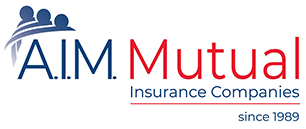
IT BECAME KNOWN as “The Bubble,” the onsite patient care model adopted by Shady Oaks Assisted Living, an A.I.M. Mutual policyholder in Bristol, Connecticut. Unprecedented and inspired, it drew media coverage from dozens of outlets, including CNN, NPR, and MSNBC. “The Bubble” came together quickly in a race against the COVID surge.
By March 2020, owner Tyson Belanger understood all too well what was coming and what it could mean for assisted living facilities like his. He immediately closed Shady Oaks to outside visitors and started screening staff. Yet the dangers of asymptomatic and pre-symptomatic transmission weighed on him. He feared his at-the-door staff temperature checks would not be enough to protect his residents.
So he bought five RVs and convinced a third of his staff members to live on the premises for at least two months. The goal? Keep everyone safe by limiting exposure, buying time until better testing and broader safety protocols emerged. The model was a success—no residents were lost to COVID at the height of the pandemic or to date. Tyson’s proactive response likely saved lives.
We invited Tyson to talk about the Shady Oaks culture, the events of the past two years, and why workers’ compensation management matters, especially in times of crisis.
THE SHADY OAKS VISION
Forty-six years ago, my parents built Shady Oaks Assisted Living in Bristol, Connecticut. With a team of 56 staff members, we ensure round-the-clock care for 40 residents whose average age is about 90. Our vision is to combine a bed-and-breakfast feeling with nursing home-level care. We have more staff and better-qualified staff than many other assisted livings, with starting wages well above the market rate. We are a great fit for gentle elders who struggle with self-care or memory loss, and we are more affordable than 24/7 home care.
Our residents, staff, and families value our efforts against COVID-19. We are very proud that Bristol Press readers voted us Best Skilled Nursing Facility in 2020 and 2021. The Connecticut Assisted Living Association named us Humanitarian Home of the Year in 2021. As of March 2022, we had 46 Google reviews with a perfect 5-star average.
THE PANDEMIC ONSET
In Bristol’s five nursing homes during the spring 2020 COVID-19 surge, over 189 residents got COVID; 59 died. Countless staff in Connecticut caught it while caring for infected residents. Here, with “The Bubble” in place, we had no resident infections. Seventeen staff members and I lived in our neighboring house, trailers, and spare bedrooms for 10 weeks. We worked up to 80 hours weekly and did not commute. We paid $20,000 monthly for nurses and $15,000 for CNAs, about five times their usual earnings, while paying full wages to our furloughed staff. I spent most of my life’s savings as hero pay; the paycheck protection program and donations helped. And our “Bubble” brought us through.
SAFETY MEASURES CONTINUE
In June 2020, we began weekly tests for all staff and residents, while staff and visitors began wearing KN95 masks. By November, we had 75 air purifiers, and we exceeded hospital surgical room air sanitation standards in our visitor and break rooms. In February 2021, we reached 100% resident vaccinations and 80% among our staff. By September, we had 100% staff vaccinations. With Omicron, we bought another 100 air purifiers and $30,000 of rapid tests for daily testing.
Through it all, about 15 of our staff got COVID from their lives at home or work elsewhere. We paid them to stay quarantined at home until they tested negative. We also paid COVID-exposed staff to stay home and provided free testing for their families. I gave away thousands of N95s and KN95s to our employees, and we loaned air purifiers to staff with infected family members.
As a result of all our efforts, care, and luck, only one resident got COVID; that person recovered. In total across Bristol, over 500 nursing home residents have had COVID; 102 died. Since June 2020, 293 nursing home staff members have had COVID in the Bristol area.
Workers’ Compensation Partnership
We have not yet had a workers’ compensation claim involving COVID in our home, but I trust A.I.M. Mutual will be there for us if this happens.
When our workers’ compensation premium audit came due, we worked hand in hand with A.I.M. Mutual. They helped us understand the changing landscape with regard to what is considered “payroll” during the pandemic. They took their time and explained the process. They knew I was dealing with a healthcare crisis at the time.
Somewhere, I have read that nurses’ aides have injuries at rates comparable to construction workers. This seems true. Over the years, several of our aides have had injuries while assisting residents or even while taking out the garbage. For each staff member, A.I.M. Mutual has been timely and fair in helping them receive healing treatments and assistance.
In an uncertain time, A.I.M. Mutual’s reliability means a lot. We feel grateful for A.I.M. Mutual supporting us so we can support our residents and families.
Share This Article
